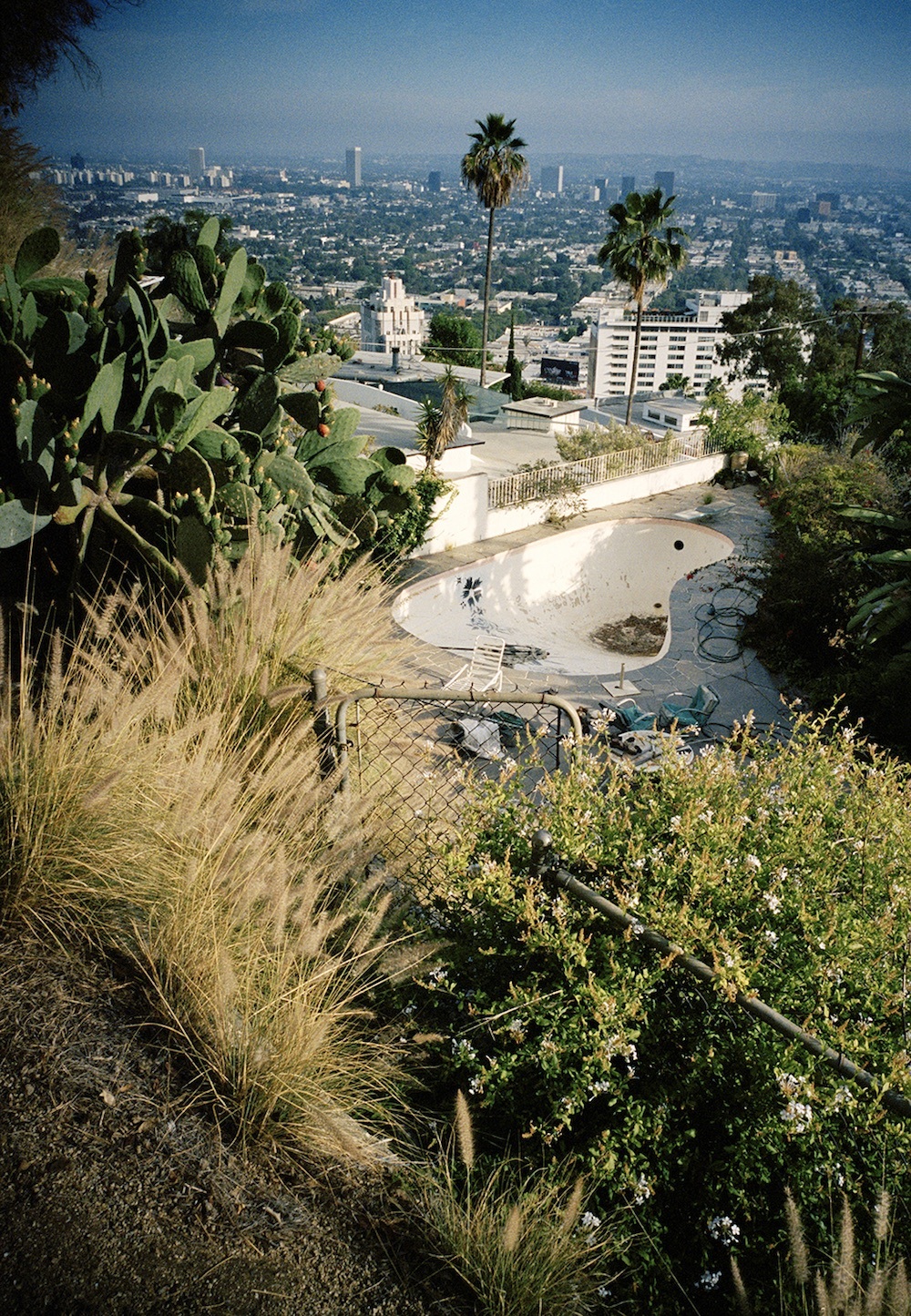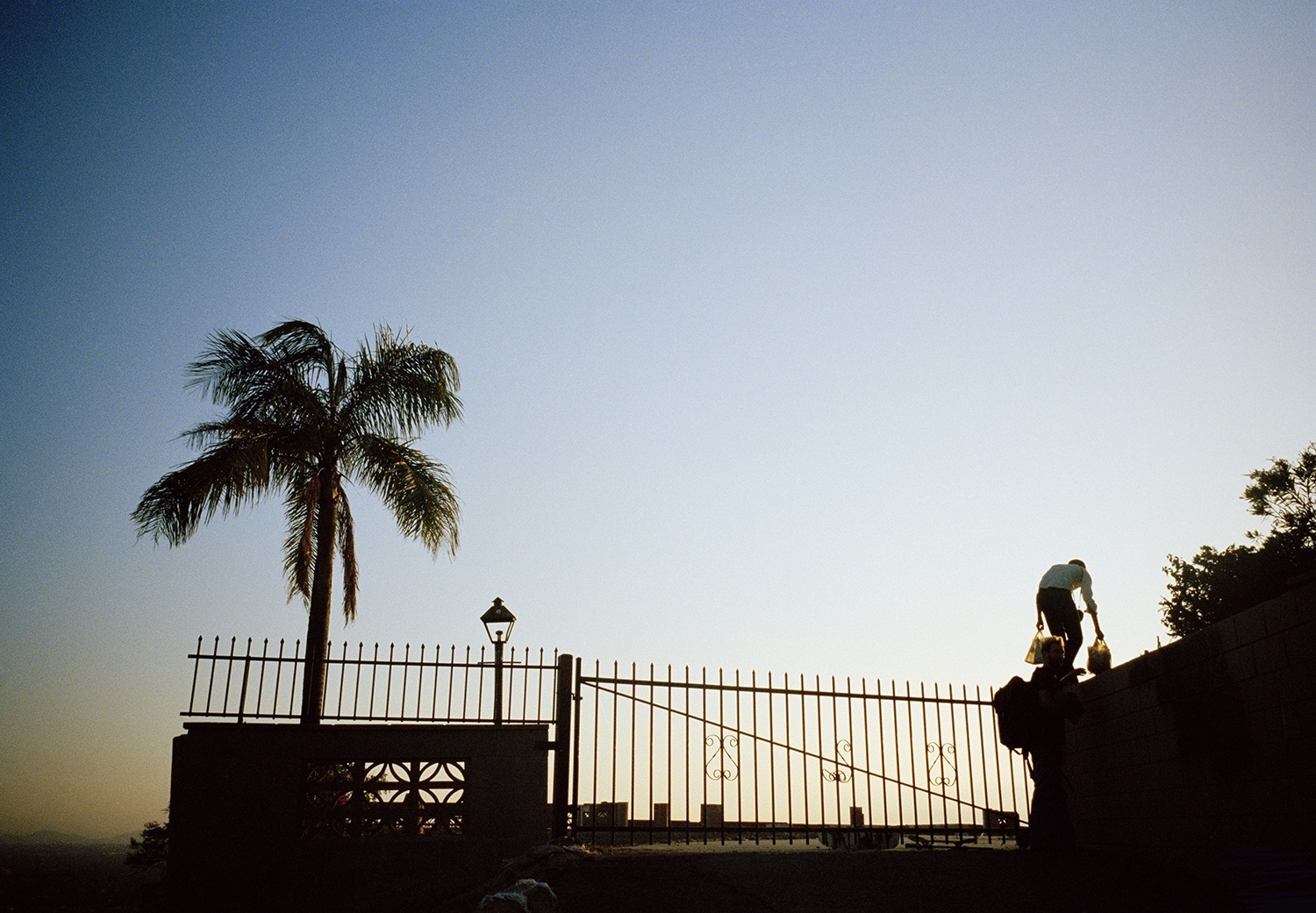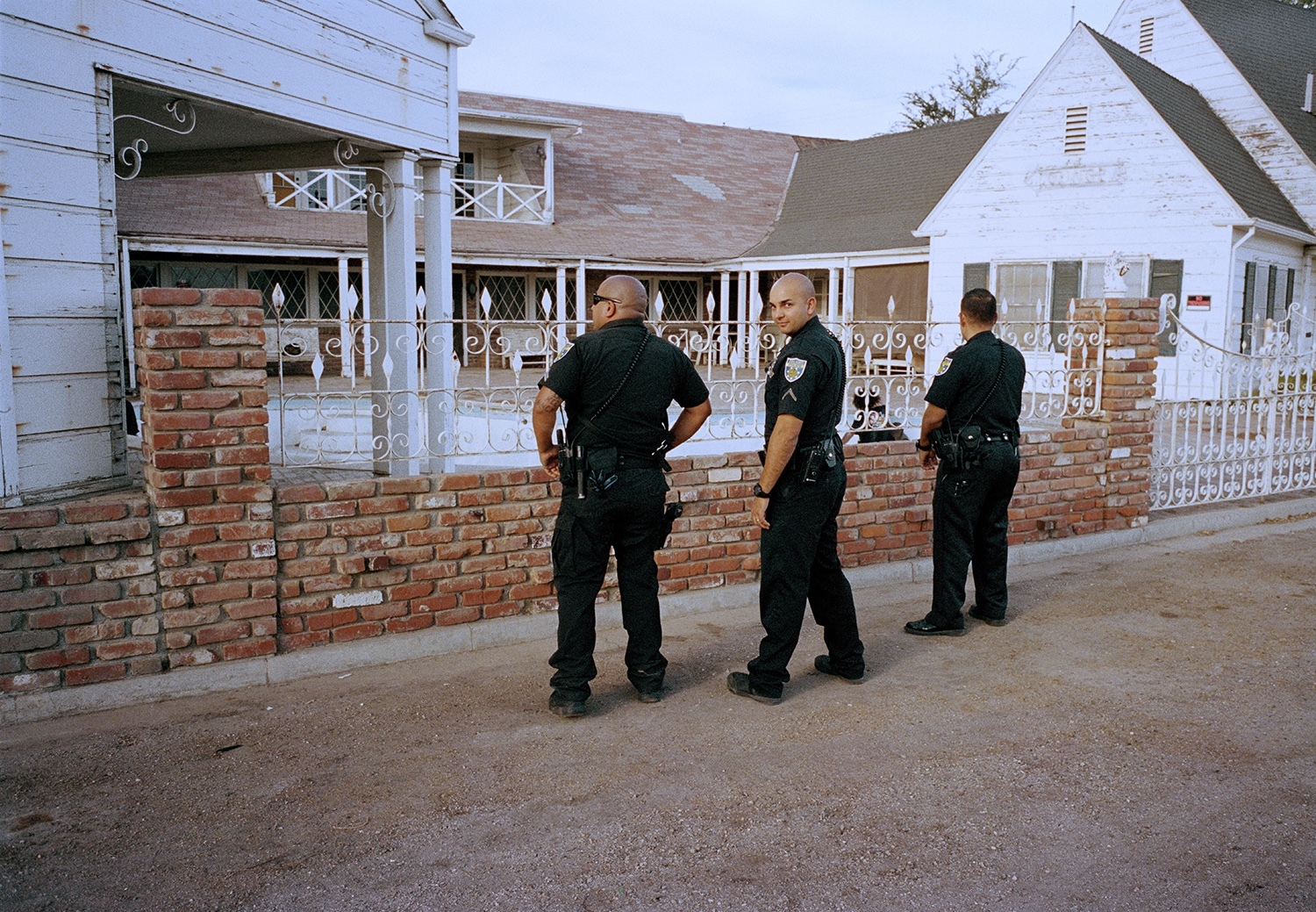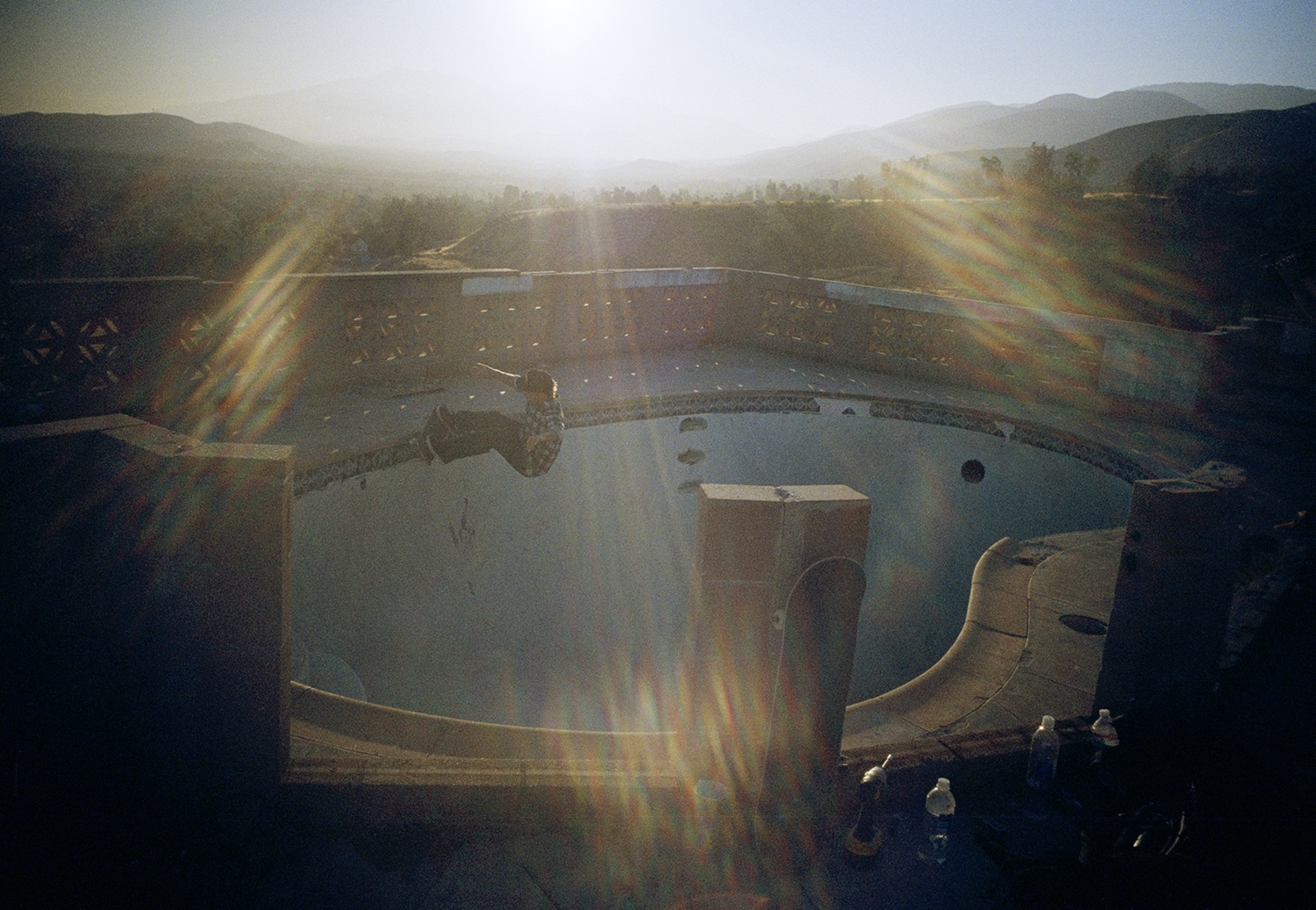Few scenes are more iconically California than skateboarders carving up a pool. Unbeknownst to most though is the work that goes into finding those hidden backyard skate spots and clearing them out. Party in the Back is a new photo book by Supreme affiliate Tino Razo (who appears in Bill Strobeck’s “Cherry”), which documents this process. Its sun-drenched images capture Tino and his buddies as they climb through vacant houses, convince strangers to let them drain their pools, and ride graffitied, empty bowls that evoke a disappearing American Dream.
In 2010, Tino relocated to Los Angeles from the East Coast – where he’d grown up skating with his older brothers – and that change presented him with a whole new world of skating. “Moving here and skating pools was totally different from the experience of skating in cities. It was new and refreshing again,” he says. “It was a different focus for something I’ve put everything into.” Here, Razo explains how to talk a stranger into letting you and your friends into their home.

How do you find the pools you photograph?
Through a lot of friends of friends and tons of Google Maps searching. Past that, after a while, you start to notice signs of a pool being behind a house; like yellowing grass, a fence. Being a street skater you have a crazy wandering eye, always wondering what could be a potential skate spot, like a bank or a set of stairs. You think about what time a business is open until and if there’s a security guard after it closes. There’s this thought process for every kind of situation. If a spot is perfect and there’s security, we have to watch and figure out the guard’s route or when he switches with another guard. Maybe we’ll have an hour at most to try to skate something before they notice. It’s funny because pools just added more to that madness of the wandering eye.

So you’re driving by a building and you think there might be a pool there – what’s the next move?
There’s a ton of leg work involved. Before this technology of your iPhone and Google, you’d have to literally just jump right into the backyard to see if it’s actually there. Recently, it’s been raining a lot in California, so you know that you’re going to have to be emptying the water out and cleaning a lot.

How do you go about that?
It’s a multifaceted thing. If the pool is completely full of water, you check if there’s something you can plug into any kind of outlet in the back to see if there’s still electricity on at the place. If there’s not, we need a gas-powered pump. It takes about six to eight hours to drain most pools with a really good pump. If it’s just a little bit of rain, we look at the elements around us, like trash bins. Usually we have empty buckets in the back of the car. We use the buckets to dump water into the trash can and then three people help to pull the bin out, dump it and bring it back. Slowly you get to the point when there’s no water. Then you sweep the living shit out of it. A lot of times you then have to wait overnight for it to dry and you give it another sweep. Sometimes you have to find another water source to clean it again and then pull that water back out and do everything all over again.

So you only try houses that are abandoned?
We try every kind of house. If there’s a car in the driveway, we go, “Which one of us is the better wordsmith?” Then they go knock on the door and talk to this stranger, slowly easing our way into their backyard.

Are people generally pretty easy going?
It’s pretty split between people who are open to it and those who straight-up shut you down. It’s just like anything: you meet a stranger and you have to read them and work out their vibe. Originally, it was mostly my friend Josh, who just nailed it and got so many pools for us. If he was in the car, we’d always kick him out the door. We have a seven-person crew that’s pretty active and at this point everyone has had to do it.

You only started skating pools a few years ago?
I’ve been a skater since I was a little kid and my brothers skated before me. Everything your big brothers do is the coolest thing. I’m 40 and I still skate and love it. It is my life. But moving to Los Angeles it was just new. I always saw pool skating in videos growing up in Vermont, but didn’t really understand everything about it. Like anyone else from a small town, you grow up skating in your driveway with a couple of friends. If you get into it, you start reading magazines. The next thing you know, you’re moving into urban areas and trying to emulate the spots that your favorite pros are doing in whatever major city they’re living. That’s when you realize that there are obstacles like security guards everywhere. That’s always been my favorite part of skateboarding: the exploration of it. And the hunting and then getting in and getting out before you get busted by the cops.

How was California different from where you grew up?
Everything was new: the experience and the people I was meeting. It was a 100% different vibe for the world I’d embraced and loved my whole life. I was just so excited. That’s where the photos came from.
“Party in the Back” is on show at Alldayeveryday in Los Angeles from February 24 to 26.
Credits
Text Paige Silveria
Photography Tino Razo
